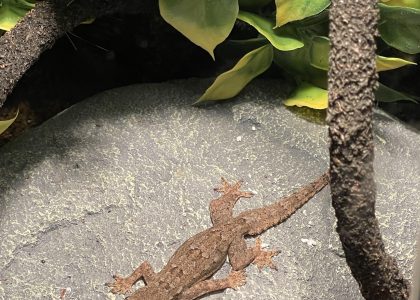Tortoises mate through a unique and fascinating process that showcases the wonders of nature. Unlike other animals, the mating ritual of tortoises is a slow and deliberate affair, reflecting their characteristic steady pace. Male tortoises use their long claws to grip onto the female’s shell, positioning themselves for successful copulation. The act itself can take hours, emphasizing the patience and commitment required in the world of tortoise reproduction. Let’s delve deeper into the intriguing world of how do tortoises mate.
How Do Tortoises Mate: An Insightful Guide to Tortoise Reproduction
Have you ever wondered how tortoises mate and reproduce? Tortoises, like many other animals, have their unique ways of continuing their species. In this comprehensive guide, we will delve into the fascinating world of tortoise mating rituals. Let’s explore the ins and outs of how these slow-moving creatures find a mate, court each other, and eventually reproduce.
The Courtship Dance of Tortoises
Before two tortoises can mate, they engage in a courtship ritual that involves various behaviors to attract a partner. This courtship dance is essential for tortoises to communicate their readiness to mate and establish a connection with a potential partner.
Male tortoises often engage in elaborate displays to impress the female. They may bob their heads, hiss, or even gently nudge the female to get her attention. These behaviors help the male tortoise showcase its strength and suitability as a mate.
Choosing a Mate
Once the courtship dance is successful, the female tortoise will choose a mate based on various factors. Female tortoises are selective when it comes to choosing a partner for mating. They may assess the male’s size, health, and overall vitality before deciding to mate with him.
Female tortoises may also engage in their own set of behaviors to signal their readiness to mate. They may sway their bodies or release pheromones to attract a male tortoise. Once both tortoises have established a mutual interest, they are ready to proceed with mating.
The Mating Process
When a male and female tortoise are ready to mate, they come together in a process that can last for several hours. The male mounts the female from behind and aligns his cloaca with hers. The cloaca is a common opening for the urinary, reproductive, and digestive tracts in many reptiles, including tortoises.
Once the male and female have achieved the correct alignment, the male will use his tail to transfer sperm into the female’s cloaca. This process, known as copulation, allows the female to store the sperm for fertilization at a later time.
Egg Laying and Incubation
After mating, female tortoises will go through a period of gestation before laying their eggs. The gestation period varies depending on the species of tortoise but can range from several weeks to several months. When the time is right, the female will find a suitable nesting site to lay her eggs.
Female tortoises dig a hole in the ground using their hind legs to create a nest for their eggs. They then carefully lay their eggs in the nest, covering them with soil to protect them from predators and the elements. Once the eggs are laid, the female tortoise will leave the nest site, and the eggs will begin the incubation process.
Hatching of the Eggs
After an incubation period that can last several months, the eggs will begin to hatch, and tiny baby tortoises, known as hatchlings, will emerge from their shells. The hatchlings are typically independent from birth and must fend for themselves in the wild.
Once the hatchlings have emerged, they will make their way to the surface and begin their journey into adulthood. They will face many challenges along the way, including predators, food scarcity, and environmental factors. However, tortoises are resilient creatures that have evolved to survive in their natural habitats.
In conclusion, the mating process of tortoises is a fascinating and intricate aspect of their lives. From courtship dances to egg laying and hatching, tortoises have developed unique behaviors to ensure the continuation of their species. By understanding how tortoises mate and reproduce, we can gain a deeper appreciation for these remarkable creatures and the complex ecosystems they inhabit.
Next time you see a tortoise, remember the incredible journey it has taken to reach adulthood and the vital role it plays in maintaining the balance of nature. Tortoises may be slow, but when it comes to mating and reproduction, they have perfected the art of survival through millions of years of evolution.
How Giant Tortoises Mate On A Volcano | BBC Earth
Frequently Asked Questions
How do tortoises mate?
Tortoises mate by the male mounting the female from behind and aligning their cloacas to allow for the transfer of sperm. This process typically involves the male nipping at the female’s limbs or shell to encourage her to move into position.
What is the role of courtship behavior in tortoise mating?
Courtship behavior in tortoises plays a crucial role in mating as it helps in establishing compatibility and readiness for reproduction. This behavior includes circling, head bobbing, biting, and vocalizations, all aimed at attracting a mate and ensuring successful mating.
How do tortoises ensure successful fertilization during mating?
Tortoises ensure successful fertilization by the male transferring sperm into the female’s cloaca during mating. The female then stores the sperm until she is ready to fertilize her eggs, which allows for the fertilization process to occur internally.
What are the mating habits of different tortoise species?
Various tortoise species exhibit unique mating habits, including specific courtship displays, mating seasons, and behaviors. For example, some species may only mate during certain times of the year, while others engage in elaborate courtship rituals to attract a mate.
Final Thoughts
In conclusion, tortoises mate through a process that involves the male mounting the female and aligning their reproductive organs. This can be a slow and complex ritual, involving specific behaviors and movements to ensure successful copulation. It is important to note that tortoise mating can vary between species, with some engaging in aggressive courtship rituals. Understanding how do tortoises mate is crucial for their reproductive success and the continuation of their species.










